 Chapter II: Rolling Hills, Open Sky:
Chapter II: Rolling Hills, Open Sky:
Pioneers of the Wild Frontier
“The world was full of rumors just then, a marvelous thing had happened: a new land had been discovered, and just when it was needed. The people had wandered to the end of the world, in quest of food and safety. Like sand in an hourglass, pouring grain by grain. Over many thousands of years, wandering bands of people drifted toward the end of one world and crossed over into another.”
Though you will find much anger among Native American tribes now at the concept - generally held - that their people originated in Asia and crossed over during one of the Ice Ages into what is now America, arguing that this makes them, in the words of one Lakota scholar, Vine Deloria Jr., “latecomers who had barely unpacked before Columbus came knocking on the door", it seems unlikely that they were always there. Other than Africa, where life is more or less now agreed to have begun, every race migrated from somewhere to somewhere. In my history of Ireland journal and my corresponding one on the history of England, I mark how each of those who believe themselves the original inhabitants came from other countries and settled there. It’s a familiar scenario, and there’s no reason to believe that it was any different for America.
Certainly, it makes more sense than the various origin myths espoused by some of the tribes, such as arriving through a giant log (Kiowa), being created by a trickster god (Crow) or even sung into existence, to the accompaniment of celestial objects getting it on with each other (Pawnee). While of course those are myths and despite the value each tribe puts upon them, I doubt there’s any member of those peoples still living now who truly believe this is how they came into being. But even if the accepted theory is true, I don’t quite get Mr. Deloria Jr.’s beef, as the last Ice Age, during which the huge ice land bridge known as Beringia stood and which may have provided a kind of “immigrant highway” for the people of Asia who sought out the new land, was about thirteen thousand years ago, so at least twelve thousand years before Columbus stood on the bow of the Santa Maria, intent on claiming the New World for Their Majesties, Ferdinand and Isabella of Spain. Some even argue for a longer habitation, going back as far as thirty-five thousand years ago. Hardly johnny-come-latelys, as Deloria Jr. seems to grump his people would be seen.
 Die Hard the Hunter: Surviving and Thriving in America
Die Hard the Hunter: Surviving and Thriving in America
Whatever your opinions on hunting these days, when little if any of it is due to hunger or a requirement for meat, back when the first Native American tribes roamed the continent, hunting was quite literally a choice between life and death. Yes, you could farm and grow crops, and many did, but these things take time. You plant your seeds and then wait through the seasons for the harvest to spring up. And even then the food has to be prepared. Not a whole lot of fun if you’re starving as you wait. Hunting is immediate, in comparison. Go out today, get lucky and come home the same evening with enough meat to feed the family, maybe the tribe. One thing America had in abundance at this time was game, from the herds of buffalo and oxen and deer that covered the country to smaller quarry such as wolves, foxes, beavers and squirrels. And then of course there was bear.
But these animals had not survived as long as they had by being stupid; they were not going to come running into a trap. Anyone, I assume, who hunts will tell you that you have to stalk your prey, and have a certain amount of skill in order to succeed. So hunting became a necessary, a vital skill among the tribes; anyone - any man - who could not hunt likely did not eat, and certainly could not provide for his family. From a very early age, most tribes would train their male children in the art of hunting, and it became second nature. But another thing herds of animals do is have a tendency not to stay in one place, ranging across the plains and the prairie for food themselves, and they’ll go where their prey, or the grass they wish to eat, is, which meant that most tribes had to be nomads or semi-nomads, following the herds as they moved across the country, relocating their camps and villages in an effort to ensure they did not go hungry.
The first believed peoples in America, known as the Clovis, flourished around 13,000 years ago, and so were necessarily primitive, and restricted to very basic weapons made of bone, wood and stone for their hunting. However, even today (as I’m sure dedicated hunters will tell you) it’s not necessarily how powerful or effective your weapon is that gets you your kill, but how well you know both the territory and the habits of your quarry. The Clovis people studied their prey, and were able to tell to a reasonably certain degree which way they were going to go, what spooked them, when they watered and so on. All of this helped them greatly in their hunting exploits, indeed there are those who blame the sudden (in geological terms) extinction of a whole raft of species on over-hunting by the Clovis. Mammoths, short-faced Bears, sabre-tooth cats, mastodons, giant sloths, camels, lions, cheetahs and, um, giant beavers the size of bears, all disappeared around the end of the Pleistocene era, about ten thousand years ago.
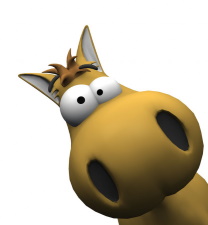
Rather surprised to read that horses, too, became extinct at this time. I guess they mean they became extinct in America, and were not seen again until the sixteenth century when the Spanish explorers brought them to the New World. Odd though: I had no idea horses had ever been classified as extinct in any country, least of all America, if prehistoric America. Learn something new every day. One of the theories put forward as to why the Clovis were so successful in such a relatively short time - and against such large and, on the face of it, fierce predators - contends that none of these animals had, up to the arrival of the Clovis, seen a human, and had no idea what to expect. Their weapons were new to them, they were a new species and they had an intelligence and organisation the animals did not. And they were ruthless, and hungry. There was only one way that encounter was going to turn out.
It should be noted, in fairness, that most scientists now discount this “
blitzkrieg theory” as it’s called, believing that climatic changes resulting in weather patterns altering and also the supply of food for these animals vanishing, as warm-weather short grasses replaced the tall-grass prairies on which the larger beasts had subsisted. The bow and arrow, which eventually became the hunting weapon of choice until the arrival of the Spanish with their guns, seems to have begun with our friends the Athabaskans, inuits and eskimos up in the Arctic anything from 9,000 to 6,000 BC, and didn’t reach the southern states, as it were, until nearly 600 AD, when they were found to be in use in Texas, and later California.
But unlike today, I assume, hunting was a spiritual as well as a physical activity. The Native American peoples had great respect, both for the land and for the animals who shared it with them. The idea that everything has a soul, or a spirit, including trees and grass and rocks, reflects in the mythology of the many tribes, most of whom worship or at least revere gods who are animals or take the shape of animals, such as eagle, bear, wolf and of course coyote. They would perform ritual dances and offer sacrifices to these gods before going on a hunt, in the hope the spirits, their ancestors, the gods and anyone else they looked up to would bless their venture, and they were always very careful to afford the creatures they killed the proper respect. As I noted earlier, many tribes did not allow the carcasses of animals slain in the hunt to be fed to dogs, which they believed disrespectful and which would then bring bad luck.
They were also very much aware of the worth of every kill, and wasted nothing if they could help it. Whereas today, a hunter might eat the cooked flesh of a deer or whatever hunters hunt these days, the Native Americans used everything, as I have already related, from skin and hide to sinews and even blood. In some ways, perhaps they believed that the spirit of the animal, which probably could not die anyway, lived on and protected, for instance, teepees covered in its skin, or warriors wearing its horns on their head, or whatever. At any rate, it would most likely have been seen to be a mark of disrespect again if they just ate the meat and threw the rest of the animal away, so they made sure everything had a purpose and could be used. This of course made them even more dependent on the animals they hunted, creating something of a cyclical sequence, a circle of death, if you will, that they took very seriously.

Then of course, there was the spirit guide.
Most people know the idea, that when a young warrior who was of age went on the mysterious often drug-induced trip known as the vision quest, it was usually to try to contact his spirit animal. For everyone this could be different: anything from a beaver to a snake or a bear to a wolf, an eagle or a spider. This animal was then inextricably linked to that warrior, would protect him and advise him, and became sacred to him.
One animal that thrived after the extinction of the larger ones by the Clovis (maybe) was the buffalo or bison, which spread out across the prairies and the Great Plains, running from Canada to the Gulf of Mexico. The buffalo soon became the Native Americans’ quarry of choice, a single animal quite possibly feeding a family of twelve for a week. Buffalo moved in herds, though, seldom found alone, and so rather than hunt singly or in small groups, the Native Americans would organise large parties, sometimes whole villages, sometimes one or more villages, to take part in a communal buffalo hunt, and share the kill. Doubtless there were many deaths. In the earlier parts of their existence on the Plains, the tribes hunted on foot, and given that buffalos weigh in the region of a ton and tend to move fast in all but stampeding herds, anyone who wasn’t quick enough, agile enough, or fell or slipped during a hunt was not likely to be going home to the village, nor was anyone likely to be helping him up.
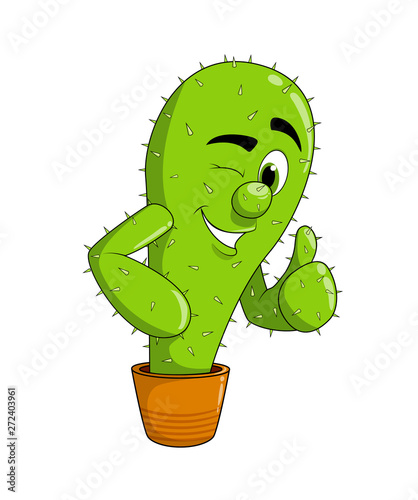
In addition to hunting, the tribes practiced gathering of fruits, herbs, grasses, roots, tubers, seeds and plants, some for use in food or drink, some for medicinal purposes, and some for ceremonial purposes. They were also squashed and their juices used as ink to decorate shields, clothing, armour and utensils. Gathering these was the job of the women, as was preparing the meat which the hunters brought in. One can almost envisage a Native American stomping into his teepee, tired but happy, jerking a thumb outside the tent. “Kill’s outside, love, take care of it would you?” and putting his feet up while the little woman went to work. Probably not very accurate, but maybe not too far from the truth. Everyone in Native American society had their place and their responsibilities, and each took theirs very seriously. A woman would not have to be told to start skinning a deer or buffalo or antelope; she would know it was her duty to transform the dead animal into edible meat and other useful products.
Many of the tribes settled along the coast, and these mostly became fishermen, drawing their bounty from the sea and the many rivers that run through America. Fishing techniques would of course have been very basic - probably nets weighted down with stones, or the traditional figure of standing in a shallow river with a spear, ready for any unsuspecting marine life to swim by - though there were of course bigger game to be had if you could put to sea, or river, in a canoe: sea otters, seals, even whales were fished by these people. What exactly they did to land a whale I have no idea, but then after watching Moby Dick it seems the plan was always to go out in the smaller boats and finish off the whales - usually the smaller ones - so they probably did that.
Whatever, the abundance of fish, especially salmon, one of the coastal First Americans’ food staples, particularly at the time of what was (and probably still is) called the salmon run, when the fish would return to their spawning grounds, led to the first real trading settlements. So many people would gather at these spawning grounds, particularly in The Dalles, a site upstream of the Columbia River, that this became a place for meeting, socialising, catching and eating the fish and for trading same, leading to the world’s first ever trade fair on the banks of the Columbia.
The first salmon of the season caught would traditionally be shared among the children of the village, and the bones of any eaten were to be thrown back into the river, as a gesture of respect to the fish’s spirit, to ensure the fishing would remain plentiful. Women were prohibited from touching salmon during their menstruation cycle, as it was believed the “unclean” blood would pollute the fish, though I doubt they were prevented from eating it. Not really sure.
Whales were dealt with in the same manner, ie the rituals had to be observed, as the Native Americans believed that a whale would only condescend to give up its life to hunters who had paid it the proper respect. After it had been killed, women would say special prayers for its spirit. Nothing was taken for granted; every fisherman knew that the caprices of wind, weather, heat, landslides of rock, or other natural disasters and phenomena could put paid to their fishing, cutting them off from their supply of food, so they took care to chant the right prayers, appeal to the spirits and the gods, and observe all the necessary rituals in the hope their food source would remain plentiful.
They were also all but horticulturalists, even ecologists, tending to the trees and plants, clearing away weeds and competing flora, using fire to clear paths and create growth, and providing enticing habitat for the animals they hunted. Just as with the fish and the buffalo, the Native Americans believed the plants, even the very grass they walked on, had a life of their own and deserved to be treated with respect. Respect was a reciprocal tool among these early peoples; if you treated something with regard then it would in turn work for you, so to speak. Respect cut both ways, as they saw it, and was a vital ingredient in ensuring their survival.








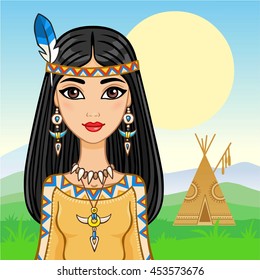

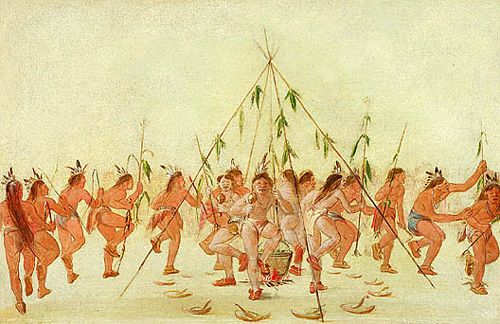
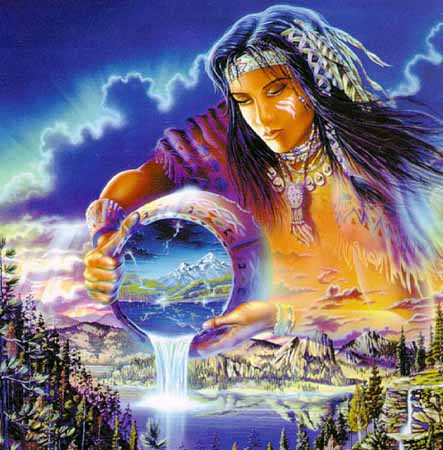
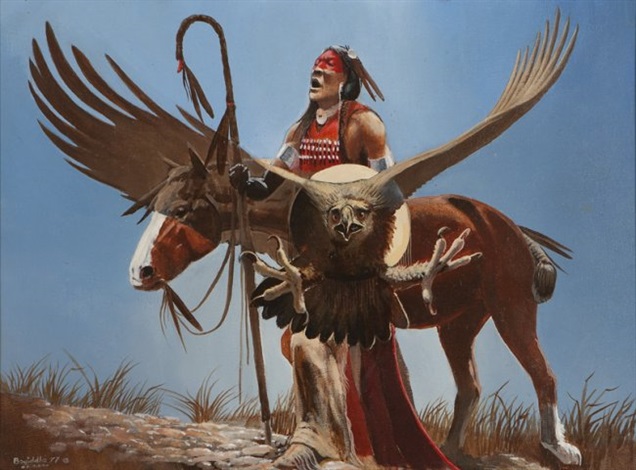

 Hybrid Mode
Hybrid Mode